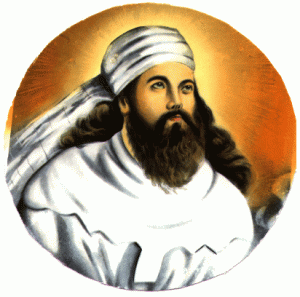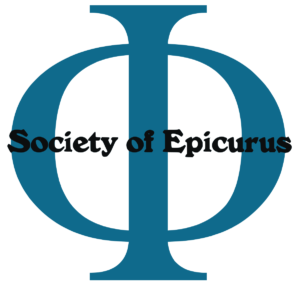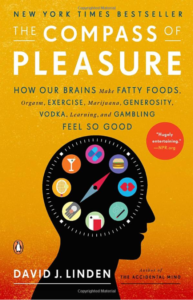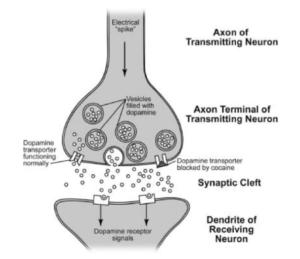
Nietzche’s Zoroaster, the Atheistic Prophet
When Zarathustra was alone, however, he said to his heart: “Could it be possible! This old saint in the forest hath not yet heard of it, that God is dead! – Thus Spake Zarathustra
Why did Nietzche choose to appropriate the figure of the Persian prophet to achieve his most important philosophical and spiritual project?
The historical Zarathustra (aka Zoroaster) did not just invent the idea of the One God (Ahura Mazda, whose name meant Wise Lord) and write the first Bible (the Avesta), but also proposed the duality and eternal, cosmic confrontation between good and evil (monotheistic morality, with the Holy Spirit / Spenta Mainyu and the Evil Spirit / Angra Mainyu as equal in power), of the final judgement, of the Messiah or World Savior to come in a future Age (whom he called the Saoshyant), and almost all of the ideas that later became staples of Christianity.
As part of this cosmology of eternal battle between the forces of good and evil, the tradition of expelling spirits and exorcism is a major concern in Zoroastrian religion which takes up a significant portion of the Avesta, and we see a great concern with hygiene related to this that reminds us of the Old Testament.
For all these reasons, Nietzche chose Zoroaster instead of Abraham as the first monotheist and the inventor of God. Because Zoroaster created the original monotheistic morality, it should be Zoroaster’s responsibility to reform the philosophical foundations of our civilization now that they have crumbled. Therefore, Nietzche makes him undo what he did, revert the other-worldly cosmology that he created and produce a naturalist one for this world, to give meaning to the Earth.
I conjure you, my brethren, remain true to the earth, and believe not those who speak unto you of superearthly hopes! Poisoners are they, whether they know it or not. Despisers of life are they, decaying ones and poisoned ones themselves, of whom the earth is weary: so away with them!
Once blasphemy against God was the greatest blasphemy; but God died, and therewith also those blasphemers. To blaspheme the earth is now the dreadfulest sin, and to rate the heart of the unknowable higher than the meaning of the earth! – Thus Spake Zarathustra
An Epicurean Assessment
The concept of the meaning of the Earth is central to Nietzche. Like Lokayatas, atomists and others, Nietzche believed that there is no other world, that this is the only reality. In that sense, he was a naturalist. He’s properly classified as an existentialist who did not believe that things had inherent meaning. It’s within this framework that his mission then becomes to fashion new meaning, which he believed could be done through art, culture, music, literature, etc.
Our friend Cassius, of NewEpicurean.com, argues that Nietzche did not agree with our school on one important point, that is the issue of clarity of expression: he wrote often in parables, metaphors, and obscure language. It seems at times that he is speaking in code. The Nazi appropriation of his philosophy is the most concerning example of how this leads to misuse of people’s ideas. For the record, Nietzche was NOT a white supremacist.
However, we must appreciate Nietzche on his own terms: that his philosophy was clad in parable was consistent with his own proclaimed values.
In Thus Spake Zarathustra, Nietzche fashioned his own, personal new mythology and cosmology (here, myth is meant not as a lie but as a narrative that produces meaning in life), using the creative tools that he proposes people should use in their philosophical projects. In this way, he was just being authentic. His masterpiece is as much a work of philosophy as it is a piece of art that carries within it a cosmos, a worldview with its own aesthetic sensibilities.
The Despisers of the Body
If meaning of this world is the cure that Zoroaster brings to humankind, then what is the disease? It is the death cults, the worldviews that teach that there is an OTHERworld, and that we live in this world only for the sake of that OTHERworld for which there is absolutely no evidence. Since it is to the OTHERworld that people go when they leave this world, that OTHERworld is full of ghosts, it is full of death. If we live in this world for the sake of that world, we are living for the sake of death.
The existential repercussions, the misery, the evils that are birthed by this Earth-hating original sin are innumerable. In The Perils of Alienation I discussed some of these evils.
Everywhere resoundeth the voices of those who preach death; and the earth is full of those to whom death hath to be preached. Or “life eternal”; it is all the same to me. If only they pass away quickly!
The preachers of this OTHERworld-focused morality and worldview are evil parasites to the new prophet, but they also invite Zoroaster’s pity. They’re also mortals and seekers of meaning.
Here are priests: but although they are mine enemies, pass them quietly and with sleeping swords! Even among them there are heroes; many of them have suffered too much: so they want to make others suffer. Bad enemies are they: nothing is more revengeful than their meekness. And readily doth he soil himself who toucheth them. But my blood is related to theirs; and I want withal to see my blood honoured in theirs.
The Overman
Here is perhaps one of the most misinterpreted ideas in the Nietzchean wisdom tradition. The Overman (sometimes translated as Superman, in German Ubermansch) is an artist-philosopher, a self-creator who makes his own life and meaning. In a naturalist, evolving cosmos empty of Gods and of inherent meaning, mortals need an ideal to pull them forward and to build meaning with. Hence, Zoroaster teaches that man is a rope between the ape and the Overman, who then embodies our destiny and whatever narratives we build around the Overman are our self-chosen guiding visions for becoming and for the future.
One of the great misuses of Nietzche’s philosophy took place during the Nazi period. The Nazis also appropriated and distorted many other ideologies and fields of knowledge, from Christianity to Odinism to anthropology. The transcendental projects related to the Overman are not projects of eugenics, however this does not mean that these projects must be excluded from the Overman. This is not an either/or matter. The Overman must be fashioned independently by each individual. There’s at least one passage that calls for procreation as one way to transcend:
Not only to propagate yourselves onwards but upwards; thereto, O my brethren, may the garden of marriage help you!
But we know from other passages that the Overman derives his identity not from his lineage, his racial or national background, but from his self-chosen destiny. The identity of the Overman is anchored in the future, not in the past, which is why so many transhumanists identify with Nietzchean philosophy and why Nietzchean ideas feature prominently in so much of our science fiction.
In chapter 56, “The Old and New Tables”, Zoroaster calls for a new atheistic nobility that must rise to oppose the theistic populace and rulers. He is referring to our ongoing evolution from ape to Superman, our perpetual need to ever overcome ourselves, to the passing of the generations and how we are all bridges between the previous and the future generations. This nobility is not backward-looking and does not derive its identity from its roots, its race or familial lineage but from its self-chosen future:
O my brethren, I consecrate you and point you to a new nobility: ye shall become procreators and cultivators and sowers of the future.
Unto your children shall ye make amends for being the children of your fathers: all the past shall ye thus redeem!
It is precisely to make amends for the mistakes of our ancestors that this nobility must rise, to break with the past. And elsewhere he says:
Ye lonesome ones of today, ye seceding ones, ye shall one day be a people: out of you who have chosen yourselves, shall a chosen people arise: and out of it the Superman.
Zarathustra then talks about how the life-hating beliefs of the world-maligners are often given undeserved credit because they’re ancient. The false-honor of old, established beliefs is therefore understood as having a degrading and ignoble effect on the soul. It is within this content that Zoroaster calls for new projects of nation-building, community-building and people-building that are rooted in noble ideas, not noble lineage.
On Self-Overcoming
Epicurean therapeutic practices were used in antiquity as part of a process of constant self-betterment, and seem to be vindicated in Zoroaster’s doctrine on self-overcoming, which is related to the Overman. He argued that rather than judge envy as a sin, we should own our envy instead of judging ourselves for it, and that we should seek to cultivate the things we envy in others, as it is obvious that we find them desirable. In other words, the impulse towards the Overman can be found through sincere introspection.
There is one area of controversy here: the transhumanist movement believes that, as part of self-overcoming, people should seek to physically enhance themselves, even up to the point that they may be able to challenge death.
Epicurus, on the other hand, calls mortals to accept their natural limits and never to attempt to be more than humans and mortals. He was a naturalist who taught that by giving up our arrogant, unnecessary fantasies about immortality, we would find peace and ataraxia. Nietzche shared Epicurus’ anti-clerical message and criticized OTHERworldly promises and fantasies of an immortal life. But would Nietzche, as a naturalist, have agreed with some version of transhumanist immortality, if that ever materializes?
The other controversy here concerns the use of violence, which was advocated by the Nazis, in the implementation of transcendental projects related to the Overman. Our friend Cassius argues on this point:
So long as that is not interpreted as domination over other people, I think what Nietzshe was mosty saying is that the overcoming that we have to do is overcoming the limits placed by society!!!
That is why I think Nietzche and Epicurus are compatible on that point. That is a perfect example of how it is important to be careful with Nietzsche. If, as I indicate, he is saying to overcome the limits PLACED BY RELIGION AND SOCIETY AND MORALS, then he is correct. If he means “overcome the limits of nature”, then he would be wrong, but i do not believe that is what he meant or did say.
The Epicurean view on self-overcoming is that the acceptance of our natural limits confers tranquility, gratefulness, satisfaction, and imperturbability, and leads to the goal of a pleasant life established by nature itself. It is from cultural corruption that we acquire most of what must be overcome through philosophical hygiene, and the Overman can be a naturalist moral ideal in this regard. Here is Cassius’ opinion on this matter:
I agree with that, but the controversy arises in where those limits are. Yes we will die eventually, but should we strive to live as long as possible, if so how long, etc? I think Epicurus would say: Yes, the limits are there, but where they are EXACTLY is a matter of circumstance, and we should work to extend our lives of pleasure as long as possible.
Three Stages of Self-Overcoming
Like Sufi masters and teachers in other traditions, Zoroaster even maps out his followers’ stages of spiritual development for them along with the important tasks and states related to each stage. They are somewhat reminiscent of the three gunas, or qualities of material nature, in the Vedic tradition: tamas (ignorance), tamas (passion) and sattva (goodness).
In the first stage, man is compared to a camel, which is a beast of burden that lives in chains and must be docile and submissive. In this stage, man sees himself as worthy of mercy and lives on its knees, a slave of tradition.
When he realizes his degraded state of existence and seeks to emancipate himself from it, he becomes a lion. His previous state leaves him angered and indignant, and he begins smashing the old idols.
In the mature stage, he ironically becomes child-like because the third stage is creative: he forges his own morality and worldview. He has reached existential maturity and authenticity.
The Men of the Crowd
The criticism of the men of the crowd in our tradition is part of a larger trend among thelaughing philosophers, an assorted list of naturalists who mock and question traditional authorities and societal conventions, always based on philosophical insights into human nature and into the general study of the nature of things which oftentimes reveals the holes in the belief systems of the herd. Therefore, many of these philosophers profoundly distrust the views of the men of the crowd. Nietzche says:
Older is the pleasure in the herd than the pleasure in the ego: and as long as the good conscience is for the herd, the bad conscience only saith: ego.
Hence the need that philosophers have felt throughout the ages (this is seen in all cultures, from Indian sadhus, to Greek Cynics, to European intellectuals) to avoid the men of the crowd. Cassius Amicus adds:
One chapter I like in particular is chapter 51, “On Passing By”. I think that is a good application of the principle in PD39 that if you can’t be friends — just PASS BY – don’t force yourself into a confrontation.
He was here referring to Epicurus’ Principal Doctrine 39, which states: “The man who best knows how to meet external threats makes into one family all the creatures he can; and those he can not, he at any rate does not treat as aliens; and where he finds even this impossible, he avoids all dealings, and, so far as is advantageous, excludes them from his life“.
Note: Against the Men of the Crowd, a diatribe against anti-empiricists that calls adamantly for the development of evidence-based critical thinking skills, is included as part of the Elemental Epicureanism course and text. For more information, you may also visitElementalEpicureanism.com, a NewEpicurean.com project.
The Ungodliest Uttering
In many ways, Grandfather Nietzche is reminiscent of the sages of our own tradition, who were known for their use of powerful mantras or formulas as remedies for spiritual diseases. Thus Spake Zarathustra almost feels like an atheistic Qur’an or Bible when it boldly proclaims in chapter 52, which is titled The Apostates, the quintessential monotheistic declaration of faith to be “the ungodliest uttering”.
Zoroaster envisions the old gods as an ancient Epicurean would envision them: full of bliss, healthy, laughing, dancing, ecstatic. The old gods “laughed themselves to death”, he says. The jealousy of the monotheistic God is, to the innocence of an Epicurean heathen, a contradiction, an insult, a blasphemous projection of our own weaknesses and evils.
With the old Deities hath it long since come to an end: and verily, a good joyful Deity-end had they! They did not “begloom” themselves to death: that do people fabricate! On the contrary, they laughed themselves to death once on a time!
That took place when the ungodliest utterance came from a God himself: the utterance: “There is but one God! Thou shalt have no other gods before me!” An old grim-beard of a God, a jealous one, forgot himself in such wise: And all the gods then laughed, and shook upon their thrones, and exclaimed: “Is it not just divinity that there are gods, but no God?” He that hath an ear let him hear.
The Adrian Del Caro translation is clearer. It says: “Is godliness not precisely that there are gods but no God?”
This bizarre twisting of scriptural references constitutes, to all effects, liberation atheology. The death of God is as relevant an epiphany as any previous one, a true cosmological event that had its beginnings when the jealousy of the desert God revealed itself. This god would be the last to fall, but fall he would eventually.
Towards the end of Thus Spake Zarathustra, Zarathustra exhibits a prophet’s moral stamina and spiritual leadership in the Worship of the Ass scene. Here, he has surrounded himself with the higher men, which appear to be prototypes of the kinds of people for whom Nietzche is writing, as he does not have the herd as his intended audience. It appears that the higher men have concluded that it’s better to worship an ass than to worship nothing and to be atheistic. Zarathustra then confronts them, calling them wicked just as the ancient prophets did with the idolaters in the monotheistic scriptures.
The Worship of the Ass episode has the effect of being Zarathustra’s version of Moses coming down from the holy mount and finding his chosen people worshiping the calf. Under the new code, the new spirituality that he preaches, Zarathustra considers any and all act deification a transgression.
The Earthquake Discloseth New Fountains
Now, the process of doing away with the old, with the false morals and wrong views of those that came before us, is a destructive and disruptive process for sure, one that can be extremely disorienting for many. One passage says:
For the earthquake- it choketh up many wells, it causeth much languishing: but it bringeth also to light inner powers and secrets. The earthquake discloseth new fountains. In the earthquake of old peoples new fountains burst forth.
Notice, again, how Nietzche appropriates apocalyptic imagery straight from the Bible and Quran. He also compares the work of the philosopher to an earthquake, whose role is that of destroying worlds and rebuilding them, of re-creating the cosmos.
The Ugliest Human Being
In the narrative, the ugliest human is he who has killed god. The god-killer is despised because he has rejected that which gives meaning to the men of the crowd. This passage is at once a contemplation of the spiritual crisis that happens once religion is irrelevant, and a contemplation of the very real prejudice that atheists suffer. The ugliest man here takes refuge in Zarathustra:
They persecute me; now you are my last refuge. Not with their hatred, not with their bailiffs – oh such persecution I would mock and be proud and glad!
Zoroaster falls, and then finds the strength to stand up again after beholding the ugliest human, but that does not mean he isn’t terrified. The ugliest human does not mind the hatred of religious bigots, but Zoroaster’s terror worries him. The death of God is a great cultural precipice, and since man is a rope between ape and superman, it is only the beginning of a new transition to a great work, to a great awakening that will be difficult. There is a huge existential task before the god-killer. Zoroaster is overwhelmed with pityat the sight of the ugliest human, to which this human replies:
Thou hast divined, I know it well, how the man feeleth who killed him, the murderer of God. Stay! Sit down here beside me.
To whom would I go but unto thee? Stay, sit down! Do not however look at me! Honour thus mine ugliness!
They persecute me: now art thou my last refuge …. Their pity is it from which I flee away and flee to thee. O Zarathustra, protect me, thou, my last refuge, thou sole one who divinedst me: Thou hast divined how the man feeleth who killed him. Stay!
The ugliest man flees from pity, and prefers shame, deeming it appropriate. His eyes are wide open and his soul sober when he beholds the human condition, calling not for pity but for constant overcoming.
You are ashamed of the shame of the great sufferer.
In the text, a god that is all-seeing and all-pitying, who witnesses all of our failings, is deemed shameless (perhaps because, if such a hypothesis were to be accepted, this god yet chooses not to invervene). The killing of god is likened to revenge on a witness. In the end, Zarathustra then lets the ugliest human crawl into his own cave and live like the prophet did, in solitude, away from the men of the crowd.
Haunted by the Shadow
Zarathustra later on encounters his shadow (his subconscious self), which has been with him in all of his wanderings and laments feeling aimless and not having a home. At first, he tries to run away from his shadow, but of course he can’t. He then confronts it, saying:
To such restless ones as you even a jail ends up looking like bliss. Have you ever seen how captured criminals sleep? They sleep peacefully, they enjoy their new security.
Beware that you are not captured in the end by a narrow belief, a harsh, severe delusion! Because now you are seduced and tempted by anything that is narrow and solid.
His encounter with the shadow reminds him of the dangers of wandering, perhaps a metaphor for the process of constant transition, self-betterment and self-overcoming. In the process of fashioning meaning, one is tempted to settle for creeds that constitute prisons for the soul.
Holy Laughter and the Devil of Gravity
The antidote for this danger becomes child-like laughter and dancing, Nietzchean sacraments which perhaps replace the Zoroastrian Spenta Mainyu (the Good, cheerful Spirit) and which oppose the evil influence of the Nietzchean devil of gravity, which here replaces the Zoroastrian Angra Mainyu (evil spirit).
I want to run alone, so that things clear up around me again. For that I’ll yet have to be long on my legs and like it. But this evening at my place – there will be dancing!
We must not forget that the historical Zoroaster falls within the tradition of stray-singers and drunken poets whose role it was to concoct ecstatic experiences; hence the ecstatic drink known as soma/haoma of the Vedic and Avestan traditions, and the kvasir of the poets in the Nordic tradition. There is a freedom-seeking shamanic and Dionysian aspect to this wanderer, and like all shamans, Zoroaster must be child-like, innocent, and he must never forget to dance. This is not the first or only reference to dancing as liberation. In a passage that should be deemed prophetic, if we consider the recent Charlie Hebdo events:
I should only believe in a God that would know how to dance. And when I saw my devil, I found him serious, thorough, profound, solemn: he was the spirit of gravity. Through him all things fall. Not by wrath, but by laughter, do we slay. Come, let us slay the spirit of gravity!
The historical Zoroaster was extremely concerned with how to banish and exorcise evil spirits that bring torment, dis-ease and sadness. Perhaps this influenced Nietzche in his choice of Zoroaster as the hero of his personal mythology. In Nietzche’s worldview, there’s a battle in this world between the forces of freedom/lightness and the forces of gravity. One laughs, dances and liberates, the other one pulls down and does not know how to laugh. He frequently speaks of the devil of gravity.
This day is a triumph; he is already retreating, he’s fleeing, the spirit of gravity, my old arch-enemy.
Anyone who thinks that atheists lack a deep spirituality that resonates deeply with the human soul, hasn’t read Thus Spake Zarathustra. Like the shamans of primal cultures, the Nietzchean Zoroaster is a facilitator of meaning for his people, the exorcizer of bad spirits, the conjurer of good spirits, and even has animal spirit assistants which seem to represent his spiritual strengths. Nietzche recognizes that these motifs are human, all too human, and so he uses them in his profoundly spiritual art.
Within the new, naturalist morality and cosmology of this world, the Holy Spirit of ancient Zoroastrianism has been replaced by new charms, the most powerful of which is laughter. Zoroaster teaches that the Higher Man wears the crown of laughter, and equates the good (as it is made tangible and real in this world) with pleasure and cheer:
Laughter is holy.
All good things laugh.
Laughter and dance represent the impulse that leads to spiritual freedom and that saves us from gravity. Elsewhere, he speaks of laughter as a charm, as a spiritual power related to courage.
I want to have goblins about me, for I am courageous. The courage which scareth away ghosts, createth for itself goblins- it wanteth to laugh.
The Honey
In the last part of the book, in the passages related to The Honey Sacrifice, Zarathustra argues that old age feels like being a ripened fruit: when one ages one gets sweeter and calmer, happier, more tolerant of others’ failings. It has frequently been noted that it is easier for older people to attain ataraxia.
In A Few Days in Athens, Frances Wright’s Epicurus explains:
In our ripened years, supposing our judgement to have ripened also, when all the insidious temptations that misguided him, and all the disadvantages that he has laboured under, perhaps from his birth, are apparent to us, it is then, and not till then, that our indignation at the crime is lost in our pity of the man. – A Few Days in Athens, Chapter 2
Nietzche’s maxim: “Human, all too human”, seems to be the reflection of one man of wisdom on this matter.
The Morning Sun
At the end of Thus Spake Zarathustra, the higher men all thank Zarathustra for teaching them to love this Earth. The novel closes by referring to them as the children of Zarathustra and to his rising like a new sun to give meaning to this world.
“Well then! The lion came, my children are near, Zarathustra became ripe, my hour came. This is my morning, my day is beginning: up now, up, you great noon!”
Thus spoke Zarathustra and he left his cave, glowing and strong, like a morning sun that emerges from dark mountains.
Further Reading:
Thomas Common translation of Thus Spake Zarathustra







